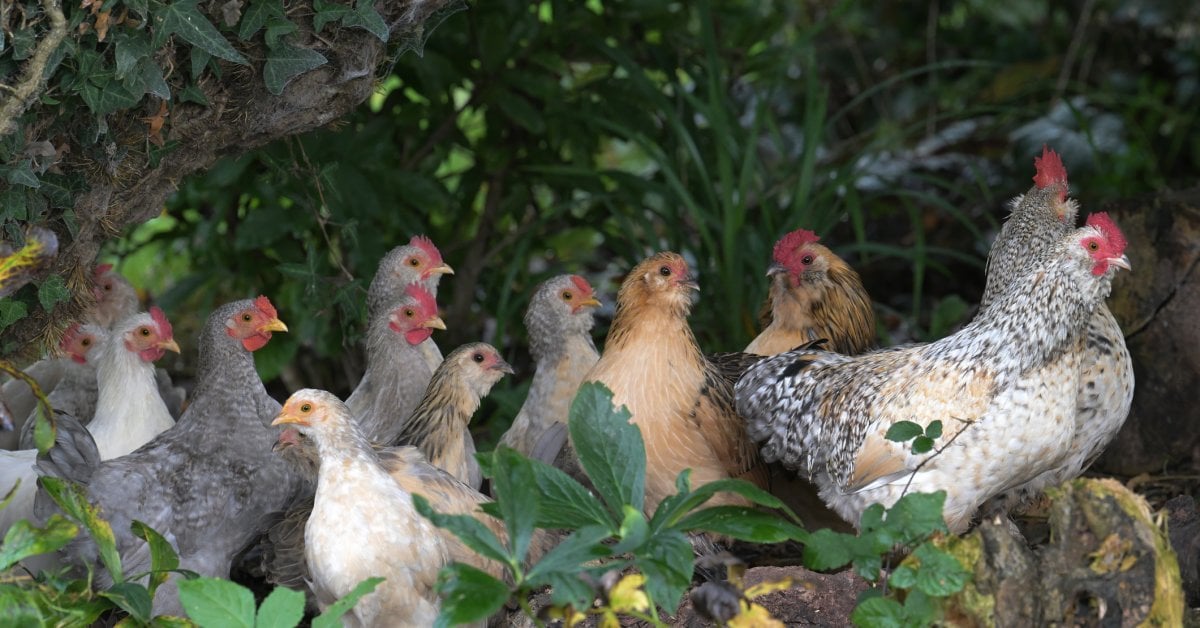
A 13-year-old girl in Canada became so sick with H5N1, or bird flu, in late 2024 that she had to be put on a ventilator. Around the same time, a senior in Louisiana was diagnosed with the first “severe” case in the U.S.
As bird flu continues to ramp up, many are wondering what tools—namely, vaccines—we have to fight it if such intervention becomes necessary.
“Public-health and infectious disease folks around the world are watching bird flu very, very carefully,” says Dr. William Schaffner, professor of infectious diseases at Vanderbilt University Medical Center and spokesperson for the Infectious Disease Society of America. “The concern is that this virus could acquire the capacity to attach to human cells and spread widely. That would be opening the door to a new pandemic for sure.”
[time-brightcove not-tgx=”true”]For that to happen, the H5N1 virus would have to develop the right mutations that allow it to more easily infect human cells—a process that could occur more easily if someone were to be infected with both seasonal flu and H5N1, for instance, allowing the two viruses to exchange genetic information and recombine into a strain that readily infects and spreads among people.
Fortunately, that hasn’t occurred yet, but health officials aren’t waiting around. Work on a vaccine is underway to protect the public in the event of a pandemic, and earlier this year, Dr. Mandy Cohen, director of the U.S. Centers for Disease Control and Prevention (CDC), pointed to mRNA as a preferred platform for the shot since vaccines can be developed and distributed quickly.
Here’s the latest on the efforts to develop a new bird flu vaccine.
Is there already an H5N1 vaccine?
Several vaccines target H5N1, and the national stockpile has doses of all of them. These shots target different strains of H5N1 that were circulating when the vaccines were developed years ago, but health experts expect they would still provide some protection against severe disease.
“Fortunately, current vaccine candidates neutralize the circulating strains in vitro,” wrote health officials from the U.S. National Institute on Allergy and Infectious Diseases in a Dec. 31 editorial in the New England Journal of Medicine. A small number of healthy volunteers have been vaccinated with these H5N1 vaccines, and the antibodies they generated appeared to neutralize the circulating virus in lab tests. But these vaccines have not yet been tested in a clinical trial, since there have not been enough H5N1 infections in humans to compare vaccinated people to unvaccinated.
What about an mRNA vaccine for H5N1?
There isn’t one yet, but several companies—including Moderna, Pfizer and GlaxoSmithKline (in collaboration with CureVac)—are working on such a shot. In July, the U.S. government’s Biomedical Advanced Research and Development Authority (BARDA) awarded Moderna $176 million to develop its updated mRNA H5N1 vaccine. All of the mRNA vaccine candidates are in early stages of testing in people for safety and efficacy.
The shots rely on the same mRNA technology that was used to create COVID-19 vaccines. In recent weeks, scientists led by a team at the CDC reported that an mRNA-based H5N1 vaccine helped ferrets generate strong antibody responses against the virus and to survive a lethal dose that killed ferrets that hadn’t received the vaccine.
Read More: We Are Not Safe from Bird Flu Until We Protect Farmworkers
Dr. Drew Weissman, director of vaccine research at Penn Medicine and a 2023 Nobel Prize winner for his work in pioneering mRNA technology for vaccines, and his colleagues also reported encouraging results with a vaccine they developed and tested in ferrets. The shot, which targeted the strain of H5N1 causing recent infections in chicken and cattle, prevented severe illness and death from H5N1 in the ferrets. Unvaccinated animals did not survive.
“The real advantage of mRNA vaccines in the context of a pandemic is the ability to update the vaccines as needed,” says Scott Hensley, professor of microbiology at the University of Pennsylvania Perelman School of Medicine who worked with Weissman to develop the vaccine. “The beauty of mRNA is the ability within a moment’s notice to change the vaccine.”
How soon could an updated vaccine be made available?
While developing an mRNA vaccine would take just a matter of months, testing the shot in clinical trials would take longer. “We know the vaccines would be well tolerated and safe because they were in the context of COVID-19,” says Hensley. “But any new antigen needs to be tested.”
In order to avoid delays in providing vaccines to the public in case of a pandemic, governments should be investing in conducting large-scale, late-stage clinical tests before a pandemic breaks out, Hensley says. “It would be investing in something that you’re not certain is going to cause a pandemic,” he says. “But it’s a decision that governments need to make. In my opinion, it would be money well spent when dealing with a virus that has the potential of this particular virus.”
Another way to avoid that delay and reduce the number of people who become sick with a pandemic-level bird flu is by developing and distributing a more broadly targeted vaccine. Influenza comes in four main subtypes—A, B, C, and D—and two, A and B, cause most infections in people. (H5N1 is type A.) Hensley developed a vaccine candidate that can recognize all 20 of the A and B influenza subtypes—including H5N1—and found that it generated strong immune responses in mice and ferrets. In addition, when the vaccinated ferrets were exposed to slightly different influenza variants within those subtypes, they still produced good immune responses against them.
Read More: What to Know About Walking Pneumonia
While the vaccine didn’t protect the animals from getting infected, they didn’t get as sick. “What it does is prime the immune system to respond and clear the virus faster,” says Hensley. “So the idea would be to prime the population with this type of vaccine that would limit initial severe disease and death in case of a pandemic. That would buy some time for more specifically matched vaccines that could be developed and used as boosters. Schools wouldn’t have to close down, and people might still be infected but not dying.”
The National Institutes of Health is sponsoring trials of this vaccine, which could change the way we vaccinate against flu and other emerging threats. Hensley says that if proven safe and effective, such a broadly targeted shot would ideally be given to young babies so their immune systems could be trained to recognize a wide range of influenza types early on. That would set them up for quicker and more effective immune responses to vaccines and infections as they got older.
Who should get vaccinated against H5N1?
Because the CDC says that the risk of bird flu is still low for the general public, there are no recommendations for anyone in the U.S. to get vaccinated against H5N1 at the moment. Some experts believe dairy workers and others who have close contact with animals likely to be infected, such as poultry and cattle, should be vaccinated to protect them from infection, but U.S. health officials have not made this decision yet, noting that a full understanding of the risks of H5N1 to people and the benefits of the vaccine aren’t entirely clear.
Finland has offered people at higher risk of exposure to bird flu—including those in the fur industry who handle wild boars and those in the poultry industry—a bird flu vaccine made by Seqirus, which uses a more traditional vaccine technology that includes an inactivated form of the virus.





























